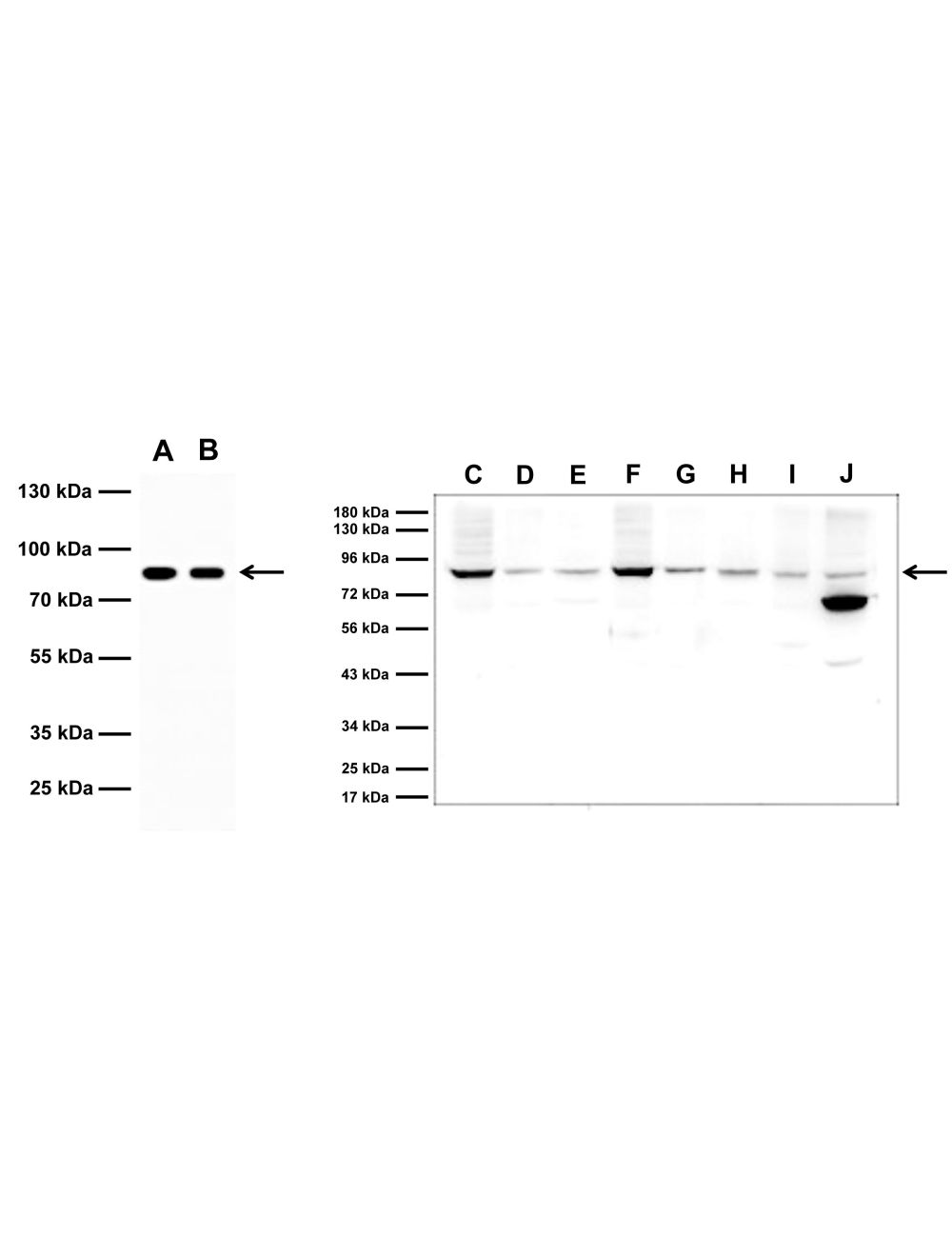Mitofusin 2, Rabbit Polyclonal Antibody
As low as
US$427.00
Only %1 left
Catalog Number
R-1793
- Product Name Mitofusin 2, Rabbit Polyclonal Antibody
- Product Description Rabbit anti-Mitofusin 2 Polyclonal Antibody (Unconjugated), suitable for WB.
- Alternative Names Transmembrane GTPase MFN2
- Application(s) WB
- Antibody Host Rabbit
- Antibody Type Polyclonal
- Specificity The specificity of this antibody has been confirmed by WB.
- Species Reactivity Human, Mouse, Rat
- Immunogen Description E.coli-derived recombinant protein corresponding to C-terminal region (601-757aa) from human Mitofusin-2.
- Conjugate Unconjugated
- Purity Description Affinity purified
- Regulatory Status For research use only.
Product Info
- Product Description Rabbit anti-Mitofusin 2 Polyclonal Antibody (Unconjugated), suitable for WB.
- Application(s) WB
- Application Details Western Blotting (WB). A concentration of 0.1-0.5 µg/mL is recommended for WB. Biosensis recommends optimal dilutions/concentrations should be determined by the end use
- Target Mitofusin 2
- Specificity The specificity of this antibody has been confirmed by WB.
- Target Host Species Human
- Species Reactivity Human, Mouse, Rat
- Antibody Host Rabbit
- Antibody Type Polyclonal
- Antibody Isotype IgG
- Conjugate Unconjugated
- Immunogen Description E.coli-derived recombinant protein corresponding to C-terminal region (601-757aa) from human Mitofusin-2.
- Purity Description Affinity purified
- Format Lyophilized with 5 mg BSA, 0.9 mg NaCl, 0.2 mg Na2HPO4, 0.05 mg NaN3
- Reconstitution Instructions Spin vial briefly before opening. Reconstitute in 100 µL sterile-filtered, ultrapure water. Centrifuge to remove any insoluble material.
- Storage Instructions Store lyophilized antibody at 2-8°C. After reconstitution, aliquot and store at -20°C for a higher stability. Avoid freeze-thaw cycles.
- Batch Number Please see item label.
- Expiration Date 12 months after date of receipt (unopened vial).
- Alternative Names Transmembrane GTPase MFN2
- Uniprot Number O95140
- Uniprot Number/Name O95140 (MFN2_HUMAN)
- Scientific Background Mitochondrial outer membrane GTPase that mediates mitochondrial clustering and fusion (PubMed:11181170, PubMed:11950885, PubMed:28114303). Mitochondria are highly dynamic organelles, and their morphology is determined by the equilibrium between mitochondrial fusion and fission events (PubMed:28114303). Overexpression induces the formation of mitochondrial networks (PubMed:28114303). Membrane clustering requires GTPase activity and may involve a major rearrangement of the coiled coil domains (Probable). Plays a central role in mitochondrial metabolism and may be associated with obesity and/or apoptosis processes (By similarity). Plays an important role in the regulation of vascular smooth muscle cell proliferation (By similarity). Involved in the clearance of damaged mitochondria via selective autophagy (mitophagy) (PubMed:23620051). Is required for PRKN recruitment to dysfunctional mitochondria (PubMed:23620051). Involved in the control of unfolded protein response (UPR) upon ER stress including activation of apoptosis and autophagy during ER stress (By similarity). Acts as an upstream regulator of EIF2AK3 and suppresses EIF2AK3 activation under basal conditions (By similarity). Reference: uniprot.org
- Shipping Temperature 25°C (ambient)
- UNSPSC CODE 41116161
- Regulatory Status For research use only.

 1800 605-5127
1800 605-5127 +61 (0)8 8352 7711
+61 (0)8 8352 7711

